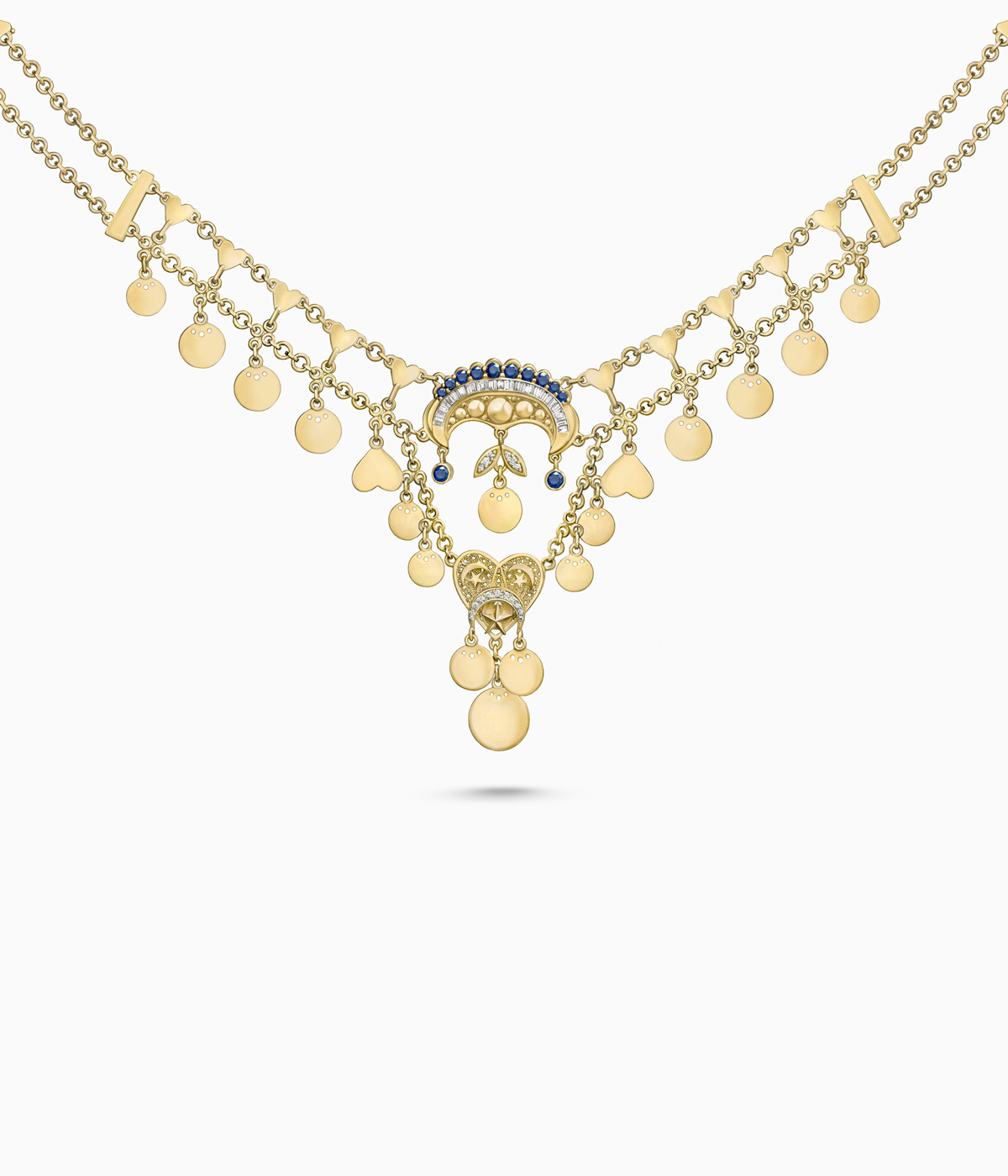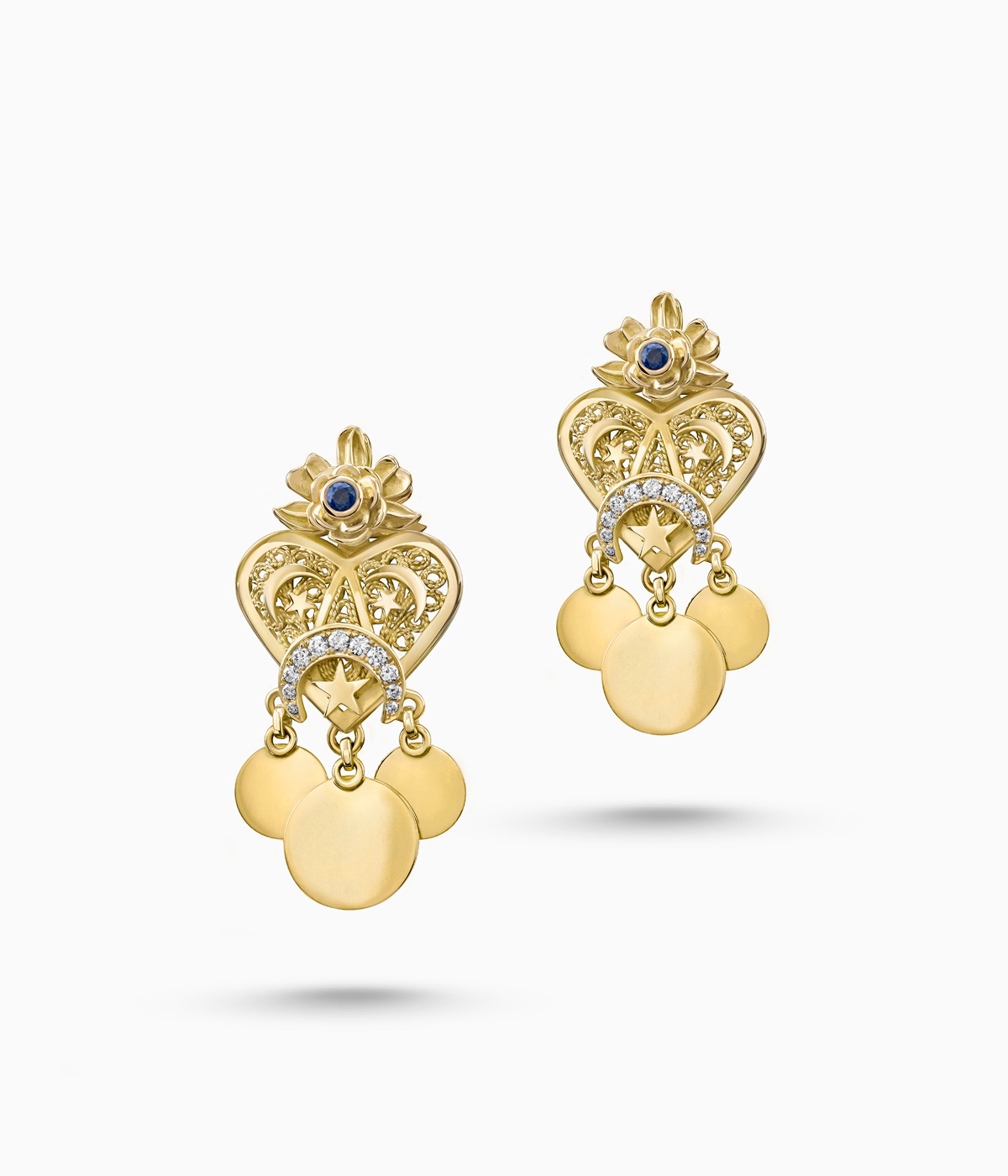
Traditional Egyptian jewellery is reimagined in the hands of Azza Fahmy, who takes inspiration from the traditional kirdan for her new jewellery collection. The kirdan, a multi-layered necklace, worn over the chest and popular in Egypt’s western desert during the 1930s, is here reinterpretated in five pieces.

‘The kirdan is the most significant piece of peasant jewellery and is known for being delicate and dainty,’ head designer of Azza Fahmy, Amina Ghali, says. ‘We wanted to give it a twist and to modernise it in a way that reflected our brand. The “Nafisa” necklace, for example, combines crescents and Ottoman stone settings with Victorian-style chokers to give it that contemporary look and feel. Other pieces in the collection have traditional Fallahy women’s names, like “Haneya”, “Aziza”, “Mabrouka”, and “Ghalia”, [and] celebrate the women who play such strong and important roles in our culture.’

The necklaces and earrings in the collection, crafted in 18ct gold and studded with diamonds, rubies, emeralds and sapphires, cut sensual silhouettes. ‘It’s a challenging task that takes time to master and a great deal of effort to be good at,’ Ghali adds. ‘You must first study and understand your heritage and the civilisations that came before you, by digging deep into the history, techniques, and craftsmanship. With its many layers and facets, it’s an exercise that you have to repeat time and again to perfect. You also have to be aware of the world around you, staying current with trends and changes. Finally, you must be able to stay true to and honour your heritage while also working to incorporate other cultures. This produces pieces that are both unique and contemporary.’
Ultimately, Fahmy nods to this heritage, while imbuing it with a fresh modernity. ‘The kirdan holds significance in Egyptian culture, and so staying true to this while also incorporating the intricate details and motifs distinctive to Azza Fahmy can be a challenge. Through this collection, we reinterpret and reintroduce the kirdan, not merely as peasant jewellery but as a high-end homage to heritage.’







